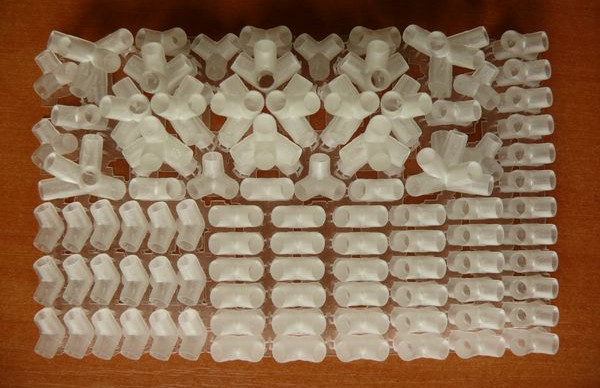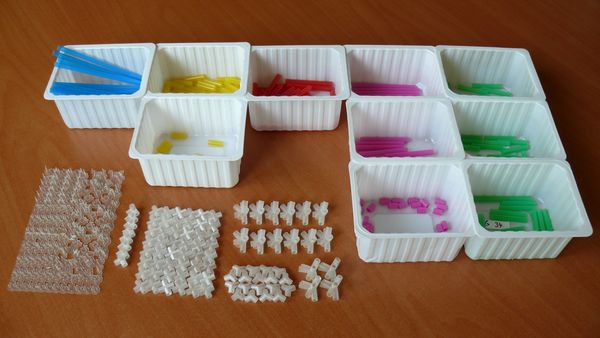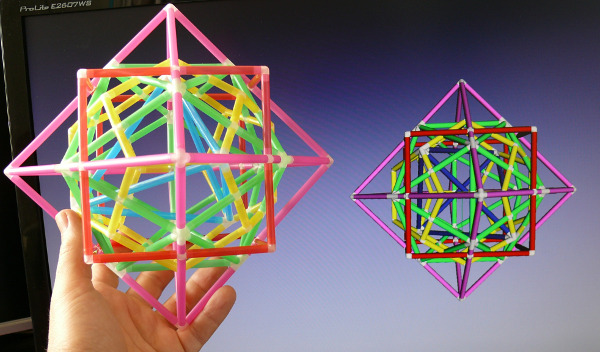For testing the methodology of the system, regular polyhedron networks are used, with edges made from colored plastic straws and nodes 3D printed from resin. This is an ideal way to quickly and cost-effectively apply the proposed methods to a model construction, which serves as a final product with sufficient illustrative value.


Edges: Straws of the respective colors and the required diameter must be cut to the desired length (accuracy 0.1 mm) according to the categorized list in the organizer.
Nodes: Virtual models must be equipped with supports, then stacked in the required quantity on the platform, printed, broken out, and categorized in the organizer.




Next is the assembly of the construction according to its virtual model. The images demonstrate this on the "5in1" construction - a mix of all Platonic solids, but ultimately, this method can be used to produce a wide range of products, mainly for academic, educational, or prototyping purposes. The entire process can be seen as an interesting game and an introduction to the technologies of the 3D world, which can end with something tangible. It is also a good practical demonstration of the functionality of the entire hardware-software infrastructure used to transfer virtual models (3D networks of nodes and edges) into the real world. The benefit of the system is its openness. It can be applied completely arbitrarily, including with entirely new methods - those that are still waiting to be discovered.


A challenge is to assemble the construction in a real production process (not in a modeling situation), where it is more like an entertaining kit. Due to the universality of the technique of connecting edges through nodes and the existence of an exact virtual model, robotic automation is an option. The advantage is theoretically unlimited size of the target product. For larger constructions, edges can also serve as "tracks" for the robotic mechanism. Another advantage of "network" constructions is the possibility to fine-tune the suitable ratio of weight and strength of the resulting structure.

